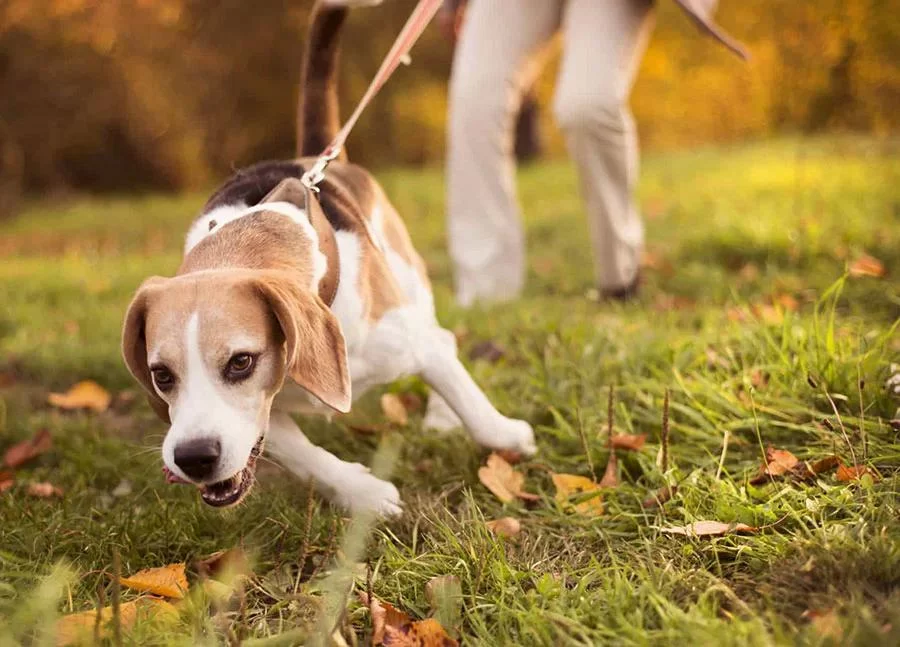How to Stop a Dog from Pulling on the Leash: My Journey and Training Tips
As a dog owner, one of the most frustrating behaviors I’ve encountered is leash pulling. There’s nothing quite like being dragged down the sidewalk by your enthusiastic dog as they pull relentlessly toward every interesting scent and distraction. My dog, Bella, was especially fond of pulling during our walks, and at one point, I dreaded going for walks with her. But after a lot of patience, training, and some trial and error, we made huge progress. In this article, I’ll share my personal experience and offer helpful tips on how to stop a dog from pulling on the leash.
Why Do Dogs Pull on the Leash?
Before jumping into the training methods, it’s important to understand why dogs pull on the leash in the first place. For Bella, I noticed that pulling was her way of getting to what she wanted faster—whether it was sniffing a particular tree or chasing after another dog. Dogs don’t naturally walk calmly beside us, especially if they’re excited, curious, or not trained to walk politely on a leash.
In essence, leash pulling is a behavior that stems from a dog’s instinctual drive to move forward and explore. However, it’s a behavior that can be corrected with consistent training and a bit of understanding. The key is to teach your dog that pulling doesn’t get them what they want.
Step 1: Use the Right Leash and Harness
One of the first changes I made to Bella’s walks was switching to the right leash and harness. Many people think that a regular collar and leash are enough, but I quickly learned that they can encourage pulling, especially in certain breeds or when a dog is particularly strong. After doing some research, I opted for a front-clip harness, which redirects the dog’s attention back toward the owner when they pull.
This made a significant difference, as the front-clip harness doesn’t give Bella the freedom to move forward as easily as a collar does. Instead, when she started pulling, the harness would gently pull her back, reminding her to pay attention to me. Choosing the right equipment is an essential first step in stopping leash pulling.
Step 2: Teach Basic Commands
Another crucial step is teaching your dog basic commands like “heel” or “let’s go.” When Bella was first learning, I used treats and positive reinforcement to get her to associate walking calmly with rewards. Every time she walked beside me without pulling, I praised her and gave her a treat. These little rewards helped reinforce good behavior and kept her motivated to walk politely.
When walking, I would frequently say “heel” and if Bella stayed at my side without pulling, I would reward her. I also practiced “let’s go,” which signaled to Bella that we were going to move, but in a calm and controlled manner. Consistency was key—by reinforcing these commands every day, Bella began to understand that pulling was not acceptable.
Step 3: Stop and Stand Still When They Pull
One of the most effective techniques I used with Bella was the “stop and stand still” method. Every time she started pulling, I would stop walking immediately and stand still. It took Bella a little while to figure out what was happening, but after a few minutes of her standing still and looking at me, she realized that pulling didn’t get her anywhere. I would then reward her for standing next to me without pulling and continue walking.
This method works because dogs are often motivated by the desire to get somewhere quickly. By stopping and refusing to let them move forward while pulling, they start to learn that pulling actually slows them down. With time, Bella began to associate walking calmly with progress, and the pulling started to decrease significantly.
Step 4: Use Positive Reinforcement and Consistency
Positive reinforcement was an essential part of Bella’s training. I made sure to reward her every time she walked nicely by my side. Whether it was with a treat, a favorite toy, or just verbal praise, she learned that walking calmly on the leash led to good things. I also made sure to be consistent—every walk, every time she pulled, I would stop and practice the same techniques. The more consistent I was, the quicker Bella caught on to the idea that walking politely was the best way to go.
While I worked on Bella’s leash training, I made sure to keep things positive and avoid any form of punishment. Dogs respond much better to positive reinforcement than to negative consequences, so I focused on rewarding the behavior I wanted to see, rather than scolding her for pulling.
Step 5: Practice in Different Environments
Once Bella started to get the hang of walking calmly in our quiet neighborhood, I wanted to challenge her by practicing in busier environments. I took her to the park, where there were more distractions like other dogs, people, and squirrels. I also walked her through areas with more foot traffic and noise, such as downtown. These practice sessions were crucial because they taught Bella to stay focused on me, even with the added distractions.
At first, Bella was excited and still pulled in these new settings, but by reinforcing the training methods we had practiced at home, she learned how to stay calm in these environments too. Gradually, Bella’s pulling became less frequent, and our walks became much more enjoyable. Practicing in different environments is key to ensuring that your dog’s leash manners stay consistent in any situation.
Step 6: Be Patient and Set Realistic Expectations
One of the most important lessons I learned through this training process was patience. Bella didn’t become a perfect walker overnight. There were days when she would still pull, and there were moments when I felt frustrated. But I realized that training takes time, and it’s important to set realistic expectations. Every small improvement was a victory, and with enough time and practice, Bella’s pulling behavior drastically improved.
Some dogs may take longer than others to master leash walking, so it’s important to stay patient and persistent. Don’t give up if progress seems slow—it’s all part of the journey.
Real-Life Story: Bella’s Leash Training Success
I’ll never forget the first walk where Bella walked calmly by my side for an entire mile without pulling. It was a huge milestone, and we both enjoyed the walk so much more than our previous, chaotic outings. Seeing her look up at me with that happy expression made all the training worth it. It was a reminder that with dedication, patience, and positive reinforcement, I could teach her to walk like a perfect leash companion. Our walks became a bonding experience, and I actually looked forward to them rather than dreading the constant tug-of-war on the leash.
Now, Bella still has the occasional burst of excitement, but she knows that pulling won’t get her anywhere. She’s become a joy to walk, and I’m grateful that we’ve built a routine that works for both of us.











